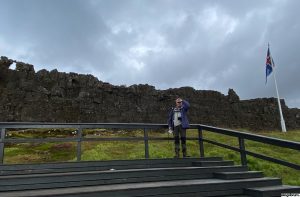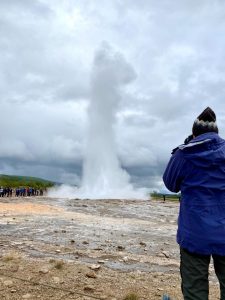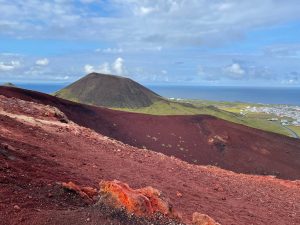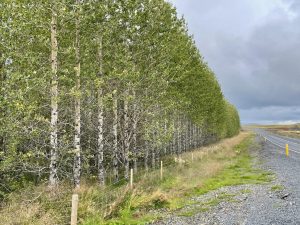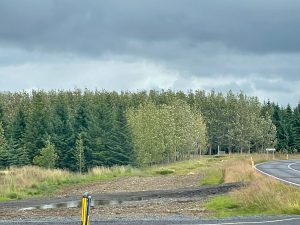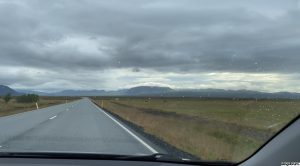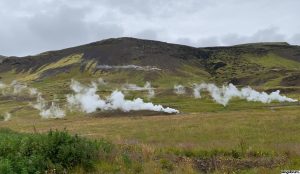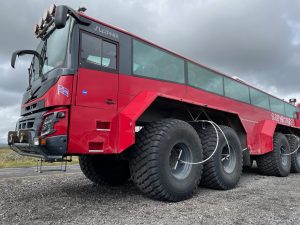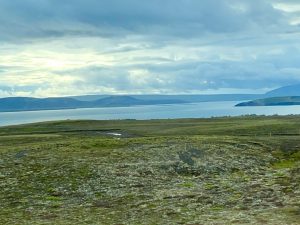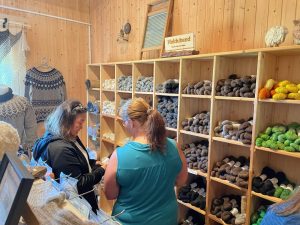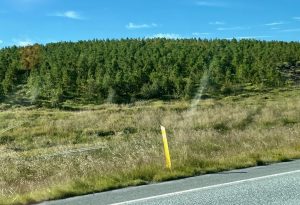Iceland is one of the five Nordic Countries together with Denmark, Norway, Finland, and Sweden. It is an island nation in the north Atlantic that is not famous for its forestry. It’s a geologically young country with active volcanoes and lots of lava fields. As the first settlers came to Iceland about 1.150 years ago, 25 – 40 percent of the land was forested. In 2016, that figure is 1,9 percent. But they are working on it …
Forestry in Iceland
When I recently turned 60, I sneaked off to London to see the Stones who also turn 60 this year. Another “oldie”, that turned 60 earlier this year, is my colleague Torbjörn at the sister-site Skogsforum.se. He went to Iceland with his wife to see volcanoes, geysers, and some forests. I guess we have different kinds of interests in what to do in our free time.
This article is based on an article that he wrote about his trip to Iceland at Skogsforum.se.
Iceland – the land of volcanoes and geysers
My trip to London together with my fiancée was fantastic. But I must confess that Iceland seems cool as well. The World’s first parliament, “Alltinget”, took place here in the year 930. 1.100 years ago(!), in Thingvellir about one hour drive from the capital Reykjavik.
Visits to the Geysir area and the island Hemön were part of the tour. One of the active geysers, Srokkur, throws boiling water 20 meters up in the air every ten minutes.
Hemön is a part of the group of islands called Vestmanaöarna. In 1973, the volcano Eldfell (fire mountain) was formed as the ground opened and lava poured out. This forced the 5.000 inhabitants to evacuate the island meaning they had to leave their homes. The island was covered in ash and the lava almost closed the port, an important fishing port. The port was saved partly thanks to the rescue team’s intensive water treatment of the lava flood.
Today, most of the ash has been removed. Houses have been restored, when possible, and new houses have been built to replace those the lava destroyed. Over 4.000 people have returned to Hemön that nowadays not only is a fishing port, but also a tourist attraction. Walking up on the two volcanos Eldfell and Helgafell, and the surrounding green bird’s mountains is possible.
Forestry
Let’s not forget that we are a forestry site. 98 percent if Iceland is not forested. In the highlands of Iceland, sheep and Icelandic horses run free during the summer. In the autumn they are collected for the winter. It’s quite like reindeer management.
In the lowlands in the southern parts of the country, large prairie-like areas are found. Here the grass is harvested for animal feed in the winter and there are also some cattle. In some places, barley is grown and the is an upcoming business in beer brewing and whisky distilling from local barley.
The forest and its species
As mentioned above, up to about half of Iceland was forested when the Scandinavian Vikings colonized the island. After that, the forest gradually disappeared, and a lot of erosion occurred. Most likely, the forest back then wasn’t the kind of forest that we are used to managing. It was probably more like mountain birch forests mixed with some aspen.
During the last 100 years, the Icelanders have struggled to make new forests grow on the island. In the beginning, it was slow but as the knowledge about tree species and provenances developed, the work became more successful. The species that are used today are mainly north American with provenances from the northwest, including Alaska. Sitka spruce (Picea sitchensis), Lodgepole pine (Pinus contorta), and Black cottonwood (Populus trichocarpa). Apart from those north American species, Siberian larch and White birch are also used.
Iceland’s tallest tree
There are many nice Sitka stands today that are 12 meters (39 ft) or higher in Iceland. But the highest tree is a Sitka spruce that measures 28 meters (92 ft), and it’s still growing. Sitka seems to thrive and grow well in Iceland. But the Lodgepole pine doesn’t seem to like Iceland at all. It seems like it prefers to grow sideways instead of upward. Some of the Icelandic Lodgepole pine plantations look more like rhododendron bushes than like forests.
Black cottonwood
The older stands often contain only one species, mainly Sitka spruce, whilst younger plantations and forests are mixed with both hard- and softwood species. Above all, Black cottonwood seems to feel at home here. It grows fast and straight. In some places, you can see birch bushes mixed with Black cottonwood that grows straight up maybe 10 meters through the “birch jungle”.
Black cottonwood is also used in the agricultural landscape as wind protection around houses, fields, and roads.
Felling and incipient wood processing
Approx. 5 million plants are planted annually in Iceland, which corresponds to a few thousand hectares. Both private and state-owned land is planted. Today, the total forested area is 200.000 hectares which is a little over 2 percent of the ice-free surface of Iceland. Not much compared to the total area of the country but much more than 100 years ago.
A little less than 2 million hectares is meadow, and some 100.000 hectares is cultivated land. Theoretically, according to the Icelandic State Forest, some 4 million hectares could be forested in the future. Some carbon storage!
Some of the Icelandic forests are being felled today. Partly in thinning where the trees are coming up in the right height. But also, clear-cuts are made to replace species and provenances that don’t grow well enough.
Hardwood is sold as firewood for private (summer-) houses but mainly to pizzerias with wood-fueled ovens. Some wood from thinning is chipped in the forest and used for forest trails. Icelanders like to visit their forests. One reason is that mushrooms are coming more and more into the “new” forests. Forests bring mushrooms, something that wasn’t available before in modern times.
Thicker softwoods have begun to be processed in small sawmills and sold as craft wood, for fencing, and construction. Many small vacation homes are seen in the coming forests, and on open land, small houses can be seen with a “shield” of trees. The forest seems to be an appreciated environment in Iceland.
Benefits from climate change
Iceland has an even but cool climate. Mild winters and cool summers. By mid-August, the temperature was around 10 – 12 degrees centigrade (50 – 54 F). Nice and cool! During the winter, thanks to the Gulf Stream, it’s seldom cold. The average temperature in the capital Reykjavik is 5 – 6 degrees C (41 – 43 F). But just as in many other places (like Sweden), the climate becomes warmer and the growing season long which is good for the forest.
According to the Icelandic State Forest, some stands have a growth of 5 – 20 cubic meters per hectare and year. Some forests have passed 20 meters (66 ft) in height, and it’s believed that the Sitka spruce can become really tall. Also, the Black cottonwood seems to have no limits in growth. The State Forest claims that the warmer climate has moved the tree limit to a level 100 meters (328 ft) above the level in 1980.
Money is a limiting factor
Planting is expensive, especially in Iceland. A forestry operation that is all about planting, with almost no felling that can finance the planting means that money must be added from elsewhere. Private forest owners can get grants from the state for planting. And the state forest has an annual budget for planting. Today, some 5 million plants are planted in the country every year.
Carbon storage – a possibility
An interesting possibility for the Icelanders is to sell carbon storage in their forests to finance planting. This is already underway on the market by the organization Kolviður – Iceland Carbon Fund. An organization was founded by two other organizations that correspond to the Swedish Forest Agency and the Swedish Society for Nature Conservation: Icelandic Forest Service and Icelandic Environmental Association.
Iceland – a fantastic but expensive destination
Visiting Iceland is a fantastic experience. There is much to see and experience that you don’t see anywhere else – different from “home”. Apart from the normal tourist attractions like the hot springs, geysers, and whales, it is a fascinating landscape just to travel around in. Bird mountains along the coasts and vast plains in the south and tundra inland. Mountains, volcanos, lava fields, and gigantic glaciers. Lots of crystal-clear water everywhere and lakes full of fish. Horses and sheep everywhere and the possibility to visit small wool spinning mills or take a horse ride if you prefer that kind of traveling.
The downside is that Iceland is expensive compared to many other European countries. Flights, rental cars, and accommodation are relatively expensive. On the other hand, you only live once. Or, as Torbjörn puts it: You only turn 60 once.
Photos: Kia and Torbjörn Johnsen






